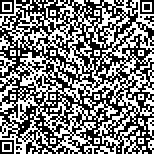本文已被:浏览 1648次 下载 2012次
Received:January 31, 2018 Revised:February 27, 2018
Received:January 31, 2018 Revised:February 27, 2018
中文摘要: 公钥基础设施(Public Key Infrastructure,PKI)和SSL/TLS加密协议,是当今互联网进行安全通信的关键要素,但存在被攻击或恶意CA所导致的重大安全隐患.2013年,谷歌提出证书透明性(Certificate Transparency,CT)技术用于对CA签发的HTTPS证书进行公开审计.目前,大多CA都支持CT,在谷歌生态中,浏览器也广泛部署CT技术,但CT也引入了新的运行风险.本文从信任机制、安全威胁两个角度梳理了CT技术,归纳总结出基于CT的Web PKI信任模型和安全威胁模型,并提出安全保障机制及应用部署建议,最后对于CT技术的发展进行了总结和展望.
Abstract:Public Key Infrastructure (PKI) and SSL/TLS encryption are key elements of today's Internet for secure communications, but a major security risk is caused by an compromised or malicious CA. In 2013, Google proposed Certificate Transparency (CT) which aimed to safeguard the certificate issuance process by providing an open framework for monitoring and auditing HTTPS certificates. At present, in Google ecology, CT is being actively supported by most of CA, and developed in browsers. Meanwhile, a number of secure-related challenges remain. This article reviews the CT technology from the perspectives of trust mechanism and security threats, summarizes the CT-based Web-PKI trust model and security threat model, and puts forward the security assurance mechanism and application deployment recommendations. Finally, the development of CT technology is summarized and prospected.
keywords: Web Public Key Infrastructure (Web PKI) Certificate Transparency security threat revocation certificate trust mechanism
文章编号: 中图分类号: 文献标志码:
基金项目:
引用文本:
张婕,王伟,马迪,毛伟.数字证书透明性CT机制安全威胁研究.计算机系统应用,2018,27(10):232-239
ZHANG Jie,WANG Wei,MA Di,MAO Wei.Overview on Security Issues of Certificate Transparency.COMPUTER SYSTEMS APPLICATIONS,2018,27(10):232-239
张婕,王伟,马迪,毛伟.数字证书透明性CT机制安全威胁研究.计算机系统应用,2018,27(10):232-239
ZHANG Jie,WANG Wei,MA Di,MAO Wei.Overview on Security Issues of Certificate Transparency.COMPUTER SYSTEMS APPLICATIONS,2018,27(10):232-239


